Recent Advancements in Prestressed Concrete Bridges
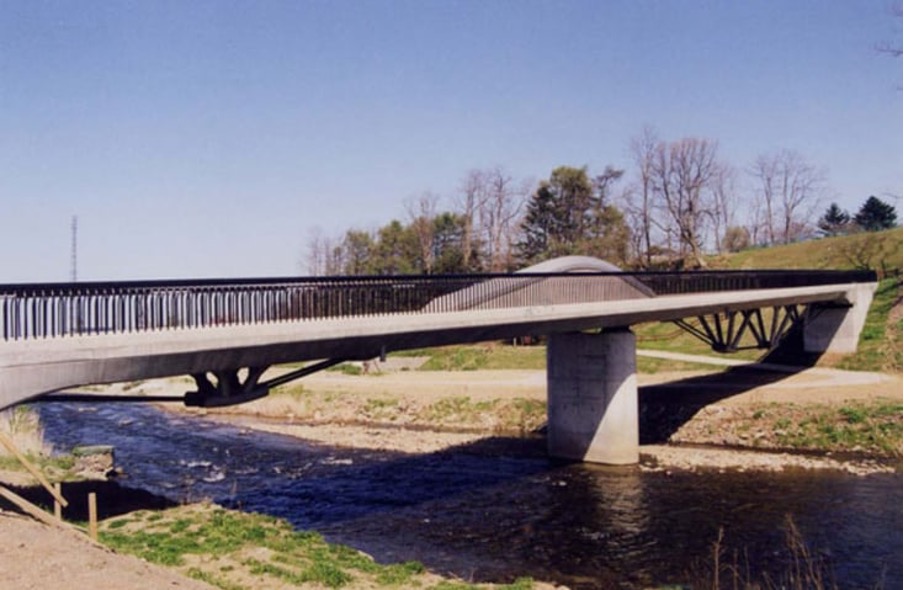
Author: MIDASoft
Publish Date: 21 Jul, 2023
Introduction
Prestressed concrete technology is widely used worldwide in the construction of various structures, especially bridges. Prestress concrete was first used in bridges in 1946 in a railway bridge in the UK (Adam Viaduct, Figure 1). By 1960, prestressed concrete bridges largely superseded the conventional RC bridges, with box girders and I-girders being the dominant form.
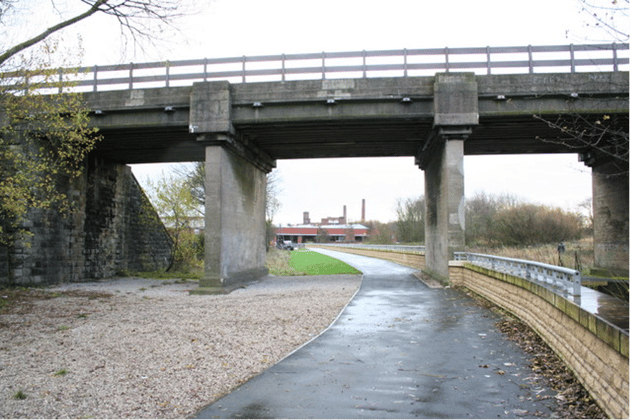
Figure 1. Adam Viaduct
The increased interest in prestressed concrete bridges can be attributed to their lower initial and life-cycle cost than conventional RC bridges. Compared to RC bridges, prestressed concrete bridges have the following advantages:
- Repair and maintenance cost is much lower
- Economical due to use of high strength material
- Aesthetically superior
Problems Faced by Prestressed Concrete Bridges
Many prestress concrete bridges underwent deterioration before their design service life due to corrosion and other environmental factors. Long-term durability has become a serious concern and needs to be considered in designing and constructing a prestressed bridge apart from structural safety, economic, and aesthetic point of view.
This issue has led to innovative solutions such as external prestressing, highly eccentric external tendons, and extra-dosed prestressing. Here, we wanted to present an overview of these innovative advancements in prestressed concrete bridges.
Development of External Prestressing
One of the significant advancements in the recent evolution of prestressed concrete is the increasing use of external prestressing. Externally prestressed concrete bridges are designed with tendons placed outside the section but remain within the bounds of the cross-section (Figure 2). This concept has become extremely popular for medium and long-span bridges. There are some obvious advantages over internally prestressed bridges:
- Reduced web thickness of the cross-section
- Possibility to control and adjust tendon forces
- Ease of inspection of the tendon during construction as well as bridge life-cycle.
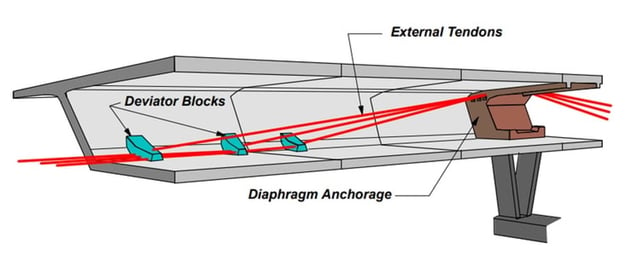
Figure 2. Typical Layout of a Prestressed Box Girder
Prestressed Concrete Bridges with Highly Eccentric External Tendons
We have seen that externally prestressed bridge has several advantages over internal prestressed bridges. However, some disadvantages of externally prestressed bridges are the lack of flexural strength due to smaller tendon eccentricity than the internal prestressed section as the eccentricity is limited by the bounds of the cross-section (i.e., at the bottom of the slab in the case of box girder). To enhance flexural strength, one possible solution is to make the tendons highly eccentric (Figure 3). This solution is possible only in external prestressing as we can place the tendons outside the concrete section. The compressive stress is taken by concrete and tensile force by external tendons, thus taking advantage of both materials. By introducing eccentric external tendons, the flexural strength can be significantly improved or, conversely, the amount of prestressing can be reduced, resulting in a more economical design.
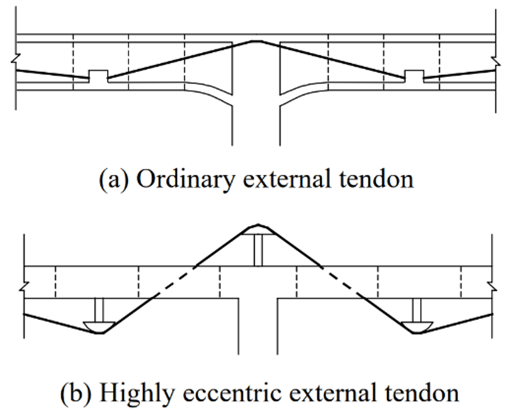
Figure 3. Ordinary vs. Highly Eccentric External Tendon
By extending the concept of highly eccentric external tendons to continuous bridges, the structural performance can be further improved (Figure 4).
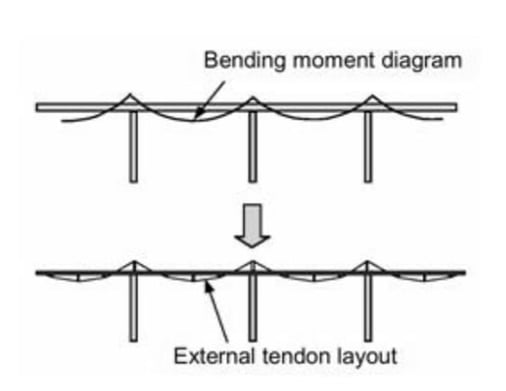
Figure 4. Schematic View of Layout of External Tendons
In order to verify the application of the concept to segmental construction methodology, various studies and investigations have been carried out on segmental girders with highly eccentric external tendons. The behavior is similar to that of a monolithic girder, giving the designer great flexibility in selecting the method of construction when going with eccentric external tendons. One concern raised for this type of structure was that the shear performance of the girder would be considerably reduced. However, experiments verified that girders with highly eccentric external tendons are much higher than conventional girders due to a significant increase in tensile force in external tendons.
The world's first application of prestressing with highly eccentric external tendons was a two-span continuous, unsymmetrical girder bridge, Boukei Bridge, in Hokkaido, Japan. The layout and complete view of the bridge are shown in Figure 5 and Figure 6.

Figure 5. Boukei Bridge Layout
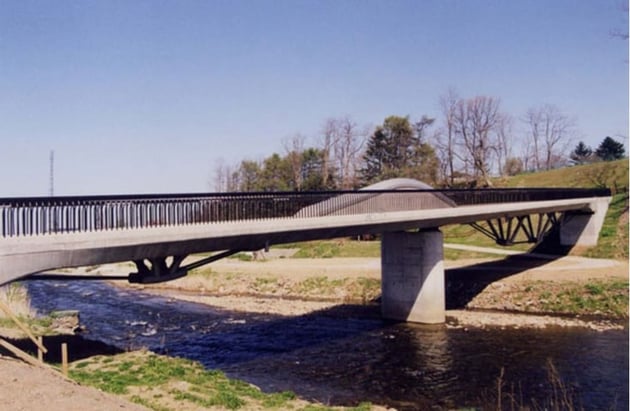
Figure 6. Boukei Bridge View
After carefully studying the Boukei bridge, it can be seen that the tendon layout takes a similar shape as the bending moment diagram in Figure 4. The tendon layout depicts a pseudo truss with the main girder as a compression chord, external tendons as tension chords, and the steel deviator as diagonal chord elements, thus allowing the girder depth to be reduced drastically, making the bridge lightweight. However, the vibration characteristics under service loads may be a concern as the stiffness of the main girder is reduced, caused by a reduction in the height of the deck.
Extradosed Prestressed Concrete Bridges
As a concept, extradosed prestressing was first proposed by Jacques Mathivat in France for Arrêt Darré Viaduct's project, which wasn't selected later. He took advantage of limited pylon height to consider cables as tendons and not as cable-stayed and gave them the name extra dosed cables (Figure 7).
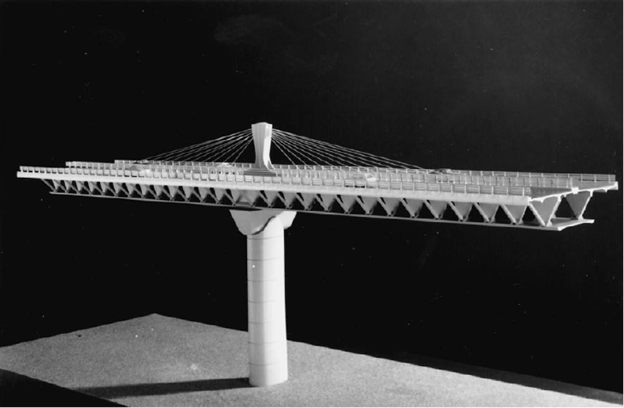
Figure 7. Mathivat’s project for Arrêt Darré Viaduct
Extradosed bridges can be considered a hybrid structure between cable-stayed bridges and ordinary girder bridges. Extradosed bridges have several advantages:
- The girder depth is lower than the conventional bridge, thus reducing the self-weight of the structure.
- The ratio of girder depth to span length (H/L) in extradosed ranges from 1/15 to 1/35, whereas for box girder bridges, it ranges from 1/15 to 1/17 (Figure 8)
- The height of pylons is less in extradosed bridge than the cable-stayed bridge, thus reducing construction cost.
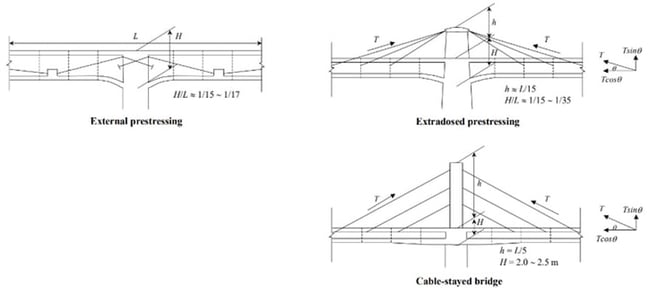
Figure 8. Comparison among Externally Prestressed Box Girder, Extradosed, and Cable-Stayed Bridge
Mathivat's extradosed bridge solution was widely used in Japan with several elegant bridges like the Odawara Blue Way Bridge, which was considered the first extradosed prestressed concrete box girder bridge in the world.
Corrugated Steel Web and its Application to Prestressed Concrete Bridges
In prestressed concrete bridges with corrugated steel webs, lightweight corrugated steel plates are used instead of concrete webs. The advantage of corrugated steel is that it can withstand shear force without unwanted axial stresses due to prestressing. The use of corrugated steel plates reduces the self-weight of the main girder by 25%. Hence this enables longer spans and less construction cost. It eliminates the clash of reinforcement and tendons in the web region, resulting in construction cost savings and improved quality and durability.
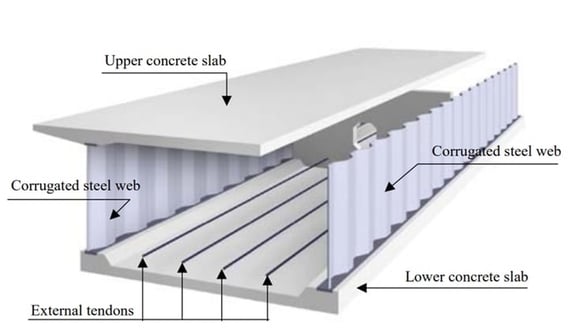
Figure 9.Typical Section of a Prestressed Concrete Deck with Corrugated Web
Conclusion
These advancements have improved structural properties in terms of safety, aesthetics, and economic aspects. The primary purpose of these innovations is to enhance the long-term durability of the structure, which is a severe problem in concrete structures these days. External prestressing with high eccentricity and extra dosed prestressing are great examples of external prestressing technology to achieve improved structural performance. The corrugated steel webs have proved to be a promising solution for longer spans and reduced construction costs.
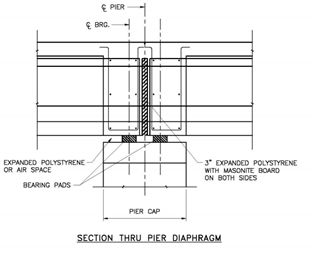
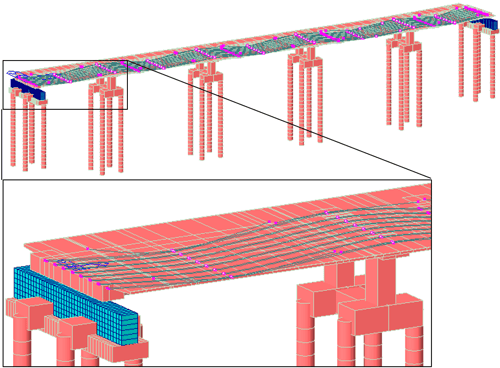
Add a Comment